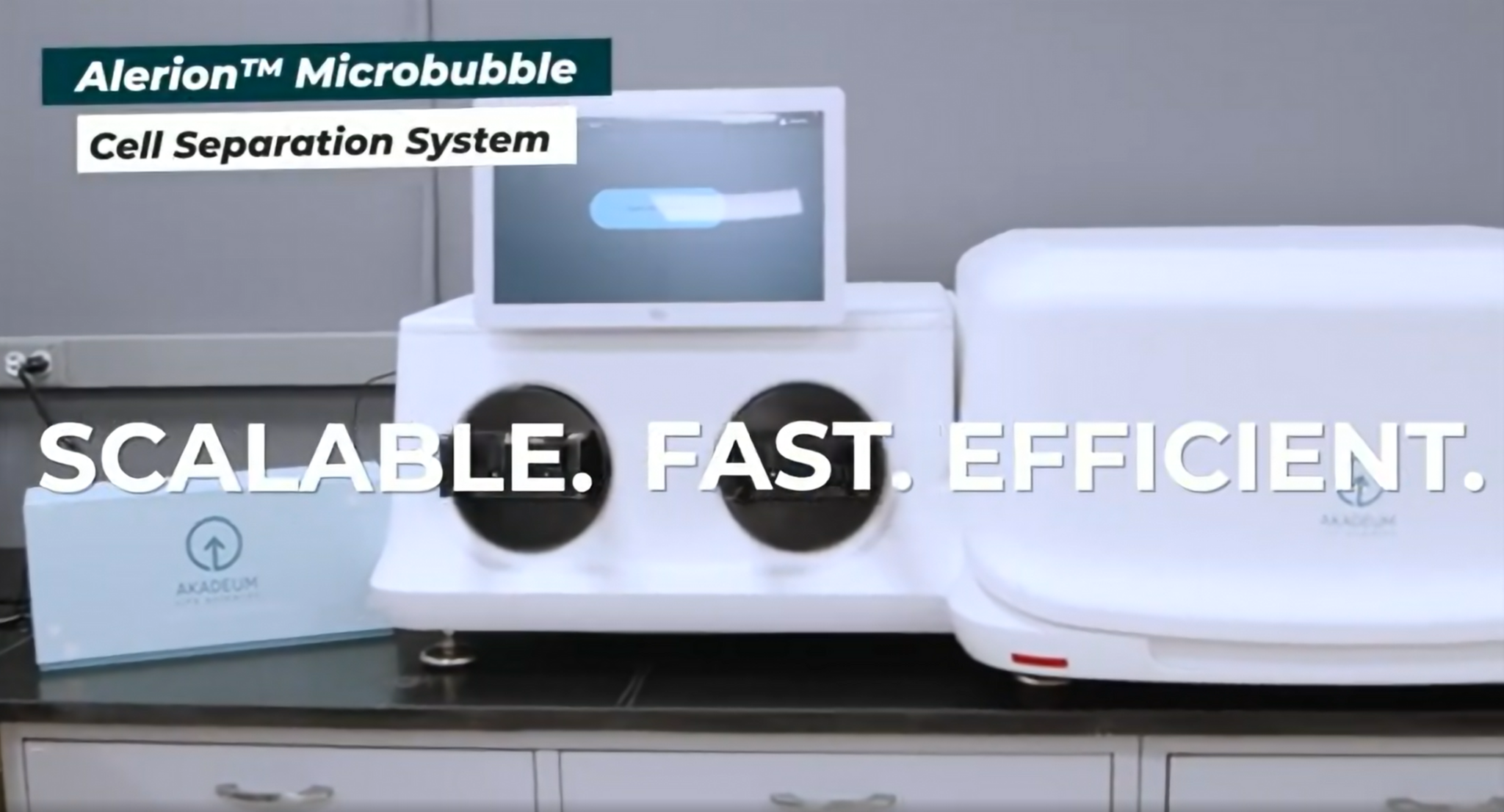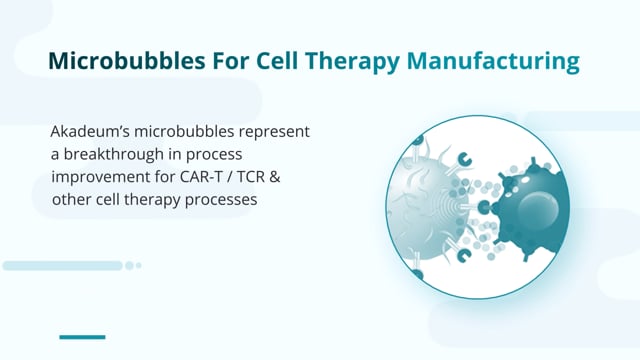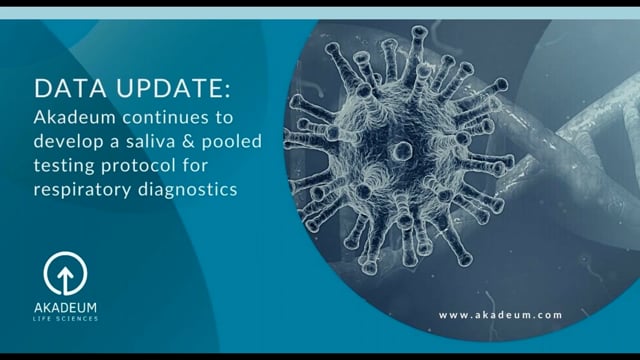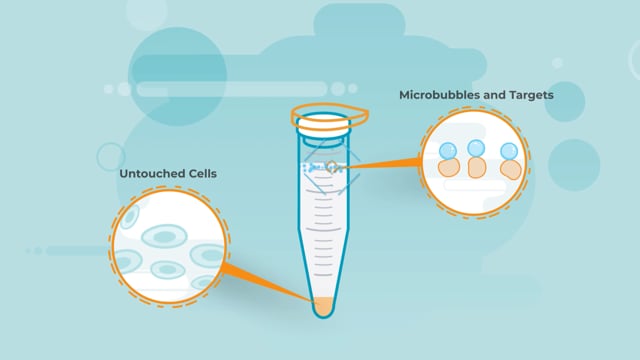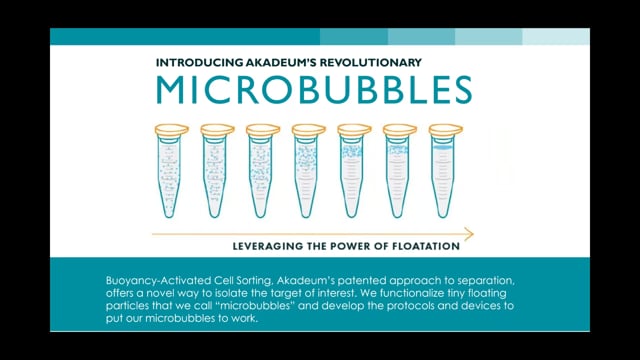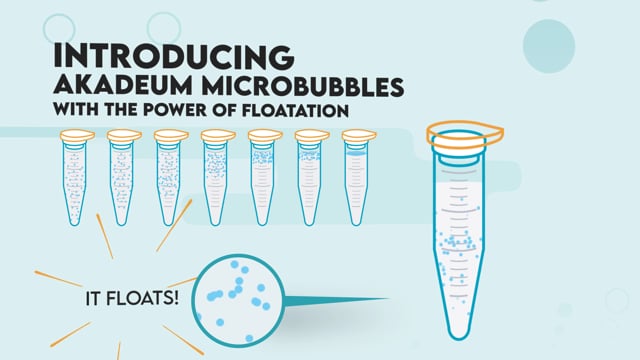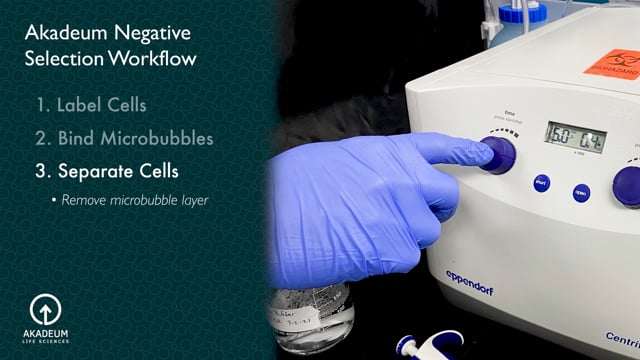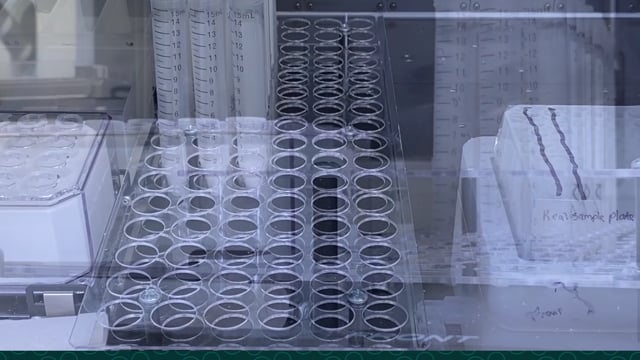Video Library
The Alerion™ Microbubble Cell Separation System: for Healthier Cells
More Videos
Alerion™ Microbubble Cell Separation System – Scalable. Fast. Efficient.
Share Category: BACSTM Microbubble Technology and Workflow
Explore the components of the Alerion™ Microbubble Cell Separation System in this minute and a half video, and learn how the components help scale up your cell therapy workflows.
Human T Cell Activation and Expansion Kit Protocol
Share Category: What’s New
Our Human T Cell Activation and Expansion Kit is now available for research use. This video will walk you through the protocol’s simple steps that can scale for your workflows. This kit is designed to isolate, activate, or expand T cells from PBMC or apheresis material.
Using Microbubbles for Your Cell Therapy Manufacturing
Share Category: BACSTM Microbubble Technology and Workflow
Akadeum’s microbubbles represent a breakthrough in process improvement for CAR-T / TCR & other cell therapy processes.
Full Webinar: Reaching New Heights with Nucleic Acid Extraction
Saliva presents an excellent option for non-invasive, self-collected samples for diagnostic testing. Research has established that saliva can be used to quantifiably measure analytes in a way that is predictive of disease presentation, though technical hurdles have prevented efficient and cost-effective scaling that would allow widespread adoption of saliva testing. Realization of the full potential of saliva testing has been impeded by the inherent limitation of magnetic technologies, especially with …
Working with Microbubbles: Aspiration Best Practices
Share Category: BACSTM Microbubble Technology and Workflow
Working with Microbubbles: Aspiration Best Practices For the most effective microbubble removal, vacuum aspiration is recommended. Here we are using a glass Pasteur pipette to aspirate the microbubble layer. Insert the pipette, bringing it down along the side wall. Aim for the top edge of the microbubble layer where it meets the side of the vial. Carefully vacuum away the microbubble layer, moving the pipette tip around the side wall …
A Superior Dead Cell Removal Platform Using Microbubbles
Share Category: Featured Products
Catch the highlights from Akadeum’s webinar: A Superior Dead Cell Removal Platform Using Microbubbles. Dead cells are a common headache when it comes to sample preparation. Their presence can lead to any number of negative downstream impacts, including poor sort efficiencies, extended sort times, and an overall reduction in purity. Buoyancy-Activated Cell SortingTM (BACSTM), Akadeum’s patented approach to separation, offers a novel approach to Dead Cell Removal (DCR). Akadeum’s microbubble …
Introduction to Akadeum
Share Category: Introduction Videos
At Akadeum Life Sciences, we have developed a revolutionary approach to sample preparation that uses our proprietary, buoyant microbubble technology to quickly and easily enrich your sample for the analyte(s) of interest while maintaining target cell health and physiology. Elegant in Simplicity, Powerful in Application Our buoyant approach to separation eliminates many of the existing technical hurdles that are limiting improvements or effectiveness of processes today. Unlike with magnetic bead-based …
Akadeum’s Negative Selection Workflow
Share Category: BACSTM Microbubble Technology and Workflow
Akadeum’s Negative Selection cell enrichment kits use streptavidin-coated microbubbles and an optimized cocktail of biotinylated antibodies to label, capture, and remove unwanted cell populations. This workflow takes about half an hour from start to finish, and is exceptionally gentle on delicate immune cells. Using one of Akadeum’s kits for sample preparation can deliver a highly-enriched population of happy, healthy cells for downstream processing.
Akadeum’s Nucleic Acid Extraction Automation
Share Category: BACSTM Microbubble Technology and Workflow
Akadeum Life Sciences was founded with the purpose of advancing human health, and in these unprecedented times, we are actively working to contribute to the global scientific community and its understanding of COVID-19 as well as the development of advanced detection capabilities. Automating the microbubble-based nucleic acid extraction workflow To save time, improve throughput, and increase efficiency, it is critical that Akadeum’s nucleic acid extraction microbubble workflow can be automated …



